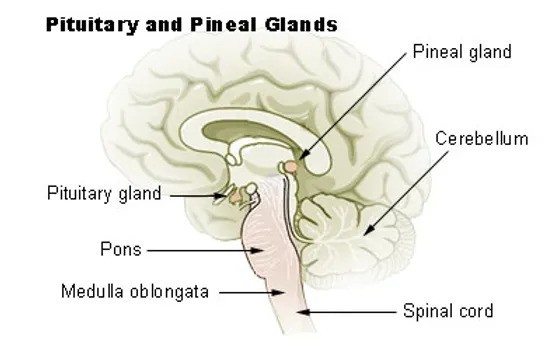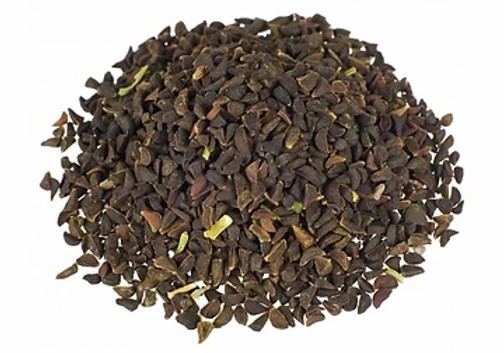A creative and inspirational blog dedicated to those interested in Sacred Plant Work
The Metsa Noma Blog
1: Expectation management Dimethyltryptamine is made in the pineal gland. This is also called your third eye. The pineal gland is also your sensory observatory with which you can see, smell, hear, feel, taste and know clearly. Dimethyltryptamine is a body-specific substance that you produce in considerably high quantities at birth and when you die. […]
I received a message from someone who was completely confused when she found out that she had not drank South American Ayahuasca at another provider, but had been given a completely different plant tea.
Since I have worked with the analog in the past and have always been honest about it, I can put myself in her shoes … without judging the other provider and these other amazing plants.
Over the last years I receive more and more questions about the composition of the shamanic tea, so I think this is the perfect opportunity to (re)write this blog about it.
After all, “honesty about what you drink!” is on the website and I fully support that.
Apparently there is a need for transparency and clarity.
To be clear: This blog is for information only.
The answer to the question: Is the use of the name Ayahuasca for analogs just a lack of knowledge or the ease of generalisation? And at the same time … Is it important and if so for whom? I’m not going to give you that answer. I distance myself from unnecessary discussions.
So, what we can find out so far:
The increase in Ayahuasca use has seen tremendous growth in the past 20 years. This is mainly because all kinds of people have been looking for alternative options to cure physical, emotional and mental illness. People felt a greater need to look for solutions outside of the regular care and pharmaceutical options. This unprecedented increase in the use of Ayahuasca is largely led by people from ‘our west’.
In addition, there is much to say about mixing thousand-year-old traditions and the Western therapeutic way of meeting many Western needs. You will always find supporters and opponents on this topic.
What we can see is that there are developments in neuroscience research and that may be of interest to those who are more interested in this.
How does it work?
Both the Ayahuasca and the analog version consist of an MAO inhibitor and a DMT component.

The liver and stomach ensure that the DMT is normally broken down by so-called MAO enzymes (monoamine oxidase enzymes), so that the DMT cannot reach the brain / pineal gland.
The Banisteriopsis Caapi and the Peganum Harmala contain MAOIs (harmine, harmaline, and tetrahydroharmine). These inhibit the action of the MAO enzymes (3 – 6 hours), which prevents the breakdown of DMT by MAO, so that the DMT can reach the brain and experience the psychedelic effects.
To get a clear picture it is important that you are aware that (and fair is fair) mainly the analog version of Ayahuasca is served in the Netherlands and Europe, with Syrian Rue (also known as Esfand or Peganum Harmala) the MAOI and Mimosa (Jurema) and whether Acacia are the DMT-containing plants.
Analog

The Analogues mimic, so to speak, the chemical part of Ayahuasca, namely the MAOI – DMT interaction. While this brew is chemically similar, there are some differences. Perhaps important, or not – you decide that yourself.
Generally, the Syrian Rue (Peganum Harmala) is used as a Mao inhibitor and Jurema (Mimosa) because it is more accessible and cheaper. This combination is also easier to make.
I speak from experience, because I have worked with the analog for a long time and have been allowed to learn.
After having had several conversations with other facilitators and participants, the MAO inhibitor in the analog would be ‘more stable’ to experience more psychedelic effects.
Usually the participants feel the first effects within half an hour. The effectiveness of this MAO inhibitor lasts 3-6 hours on average.
In taste it is more bitter due to the high level of tannins and the teachings are given at a rapid pace.
Important note: The Peganum Harmala has been used for thousands of years in the Middle East and around the Mediterranean and is a great teacher!
These plants are very special and powerful teachers and absolutely deserve their respect.
The Vine of Souls
From a shamanic perspective, the Spirit of the Liana / Banisteriopsis Caapi is absent from the Peganum Harmala / Mimosa (Jurema) experience.
The term Ayahuasca comes from Quechua. Aya means soul or spirit and Huasca means rope or vine. Vine of the Soul and (Grand) mother are the most common names. Other names such as Yage, Natema, Dapa, Mihi, Kahi, Pinde, Nixi also refer to the liana.

When I entered the world of plant medicine, I quickly noticed the attraction to the Ayahuasca vine, or the Banisteriopsis Caapi from South America. The calling to work according to the thousands of years of traditions grew every day. The South American Ayahuasca (MAO inhibitor) is often combined with Chacruna leaves and other DMT containing plants, such as Chaliponga, Jurema etc.
From a chemical perspective, the Banisteriopsis Caapi vine has higher levels of tetrahydroharmine. When investigated and these compounds isolated, these alkaloids were called ‘telepathins‘ because of their ability to induce telepathic properties in humans.
The ingredients are very high in terms of cost.
Making the Ayahuasca takes about 5 days.
For me, although strong, the taste is better to drink than the Peganum Harmala.
The intensity of the experience can be strong (er).
While a journey can also be experienced as much more peaceful and clear.
The journey itself can last well into the night without a real set time limit.
I find myself in the Student’s position and the medicine is more likely in a teaching modus to me.
It can vary greatly from person to person.
By the way, did you know that many tribes in the Amazon work with the Banisteriopsis Caapi vine on their own without DMT-containing additives? Why? -> She is the actual Medicine.
In addition, Ayahuasca is part of healing processes and in addition to many plant medicines (purgatives / purifications) and strict diets are applied and observed in order to heal.

My personal experience
I have been working with the analog in the past and I am very grateful for all the teachings and blessings I received from the Peganum Harmala and the Jurema. They are very powerful teachers and deserve all respect and love!
For many years now I have made the full shift to the Vine of Souls (completely South American brew) and I am very pleased with that. This medicine is very powerful, loving and spirited for me. The feeling that a (grand) mother takes care of me is what I experience strongly while working and traveling with the South American medicine.
Although this medicine is 8x more expensive and should be used with a kind of instructions. (read: connecting, singing icaros and maintaining long dietas in the jungle).
It takes training and deep commitment to learn & work with these plants. Probably this is the reason why the South American Ayahuasca is less often used in the Netherlands / Europe.
What can I say … I just fell in love with her authenticity.
Experiencing ‘rainbows and unicorns’ (read psychedelic effects) is only part of the process for me. Oh, don’t get me wrong … Madre Ayahuasca can give you that! (Be careful what you wish for!)
However, I am concerned with the way of cooperation with the plants and the thoroughness of the healing. The quote from one of my Shipibo maestros, don Enrique, fits perfectly with this:
“PLANTS HEAL SLOWLY, BUT THOROUGHLY!” ~ don Enrique Lopez
During the ceremony I clearly see the Vine’s intelligence at work and do what needs to be done in a certain situation. The singing of the icaros (healing songs) adds to the experience and healing during the ceremonies and is indispensable in a shamanic setting.
It seems that Ayahuasca has become a collective name for all MAO inhibitor / DMT combinations. That is in my opinion incorrect, but again … no judgment !!
I also used her name as such and through experience and in-depth work I have corrected myself.
However, working with her, sitting, learning intensely in the jungle, following heavy instructive dietas and respect for The Mother, I call only The Vine of Souls, Ayahuasca. For me, a brew that does not contain the vine is not Ayahuasca, but Anahuasca. (in other words: analog) Purely because Ayahuasca, is the name of the specific Vine / spirit.
After traveling countless times myself and now having guided ceremonies every weekend for many years, always drinking along, I can say that in all my South American Ayahuasca journey’s I have experienced clarity, wisdom and loving guidance. Obviously I am still being corrected by the plants and I am being taken to deep places where I get pulled apart until I am nothing and then I can go into nothing and embrace myself as a whole. Sometimes I experience visuals as if I am inside of a disco ball with infinite Shipibo / geometric patterns. Sometimes I fly into the universe and I have a ‘private school session’ with the plants of my dietas and sometimes I am very aware of the ceremony space and I can experience everything on a physical level.
Every journey is different … no expectation is key. As soon as you let go of expectations and let the teachings come as it is intended for you at that moment and you have the capacity to be able to (see) them … you have come a long way. You get what you need and can handle. I would say turn expectation into appreciation.
In short: One prefers this combination of plants, the other has a different feeling. It will always be like this and it is all good or not;)
For the traveler: Do your own research, inform / ASK which plants are used! … and make a choice from your heart.
Naming differences is not important in this regard. It is always important that you can enter a ceremony with the intention to be the student. Only then will you be able to receive the teachings, tailored to your sensory perception center. ~ Daphne
Irake (thank you),
Daphne Metsa Noma

